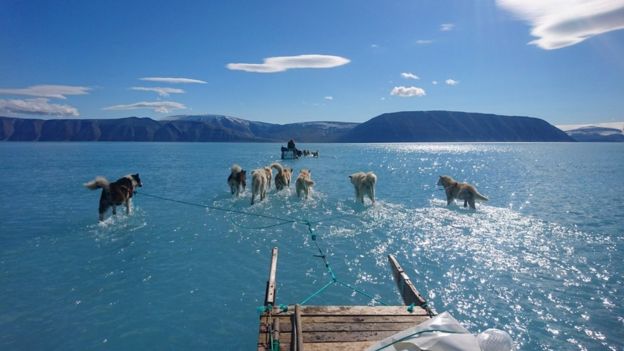One of the most amazing parts of our planet is the incredible mountain ranges that are dotted around the countries of the world. These mountains have been growing taller and taller over millions of years and while many have stopped growing, others continue to reach new heights. A new approach to measuring the age of mountains has led to new discoveries concerning a number of mountains.
In geology circles, there are some mountain ranges that are treated as young pups and others as old dogs. Australia has been thought of as the older variety for some time now. Although there are numerous volcanoes and new mountains in neighboring New Zealand, Australia has been quiet (geologically speaking) for millions of years. At least that is what researchers thought as there had been no major earthquakes or volcanic activity in the country for a long time.
Scientists had previously estimated that the mountain range in the Eastern Highlands of Victoria was 90 million years old and growing slowly, if at all. Instead new research appears to suggest that the mountain range is only five million years old and still growing incredibly fast.
The new method of measuring mountain age is based on caves in the region. If scientists can discover caves in the mountain they can test the age of the rubble inside, which then reveals when that rock was formed and how old the mountain itself is.
Four scientists from the Isotope Geochemistry Group in the School of Earth Sciences were studying the cave formations in the area and after dating the rubble found that around 250 meters of additional height had been added in just the last few million years. They estimated that it had been growing at this rate for at least 3.5 million years ago and is still continuing today.
The larger mountain range is still believed to be 90 million years old, at the same time as when the Tasman Sea emerged between New Zealand and Australia. However, the data suggests that there is more geological activity taking place and that 3.5 million years ago friction between two tectonic plates resulted in additional mountains rising out of Southeast Australia.
The data explains other geological activity in the area. While some geologists have claimed that there has been no geological activity there have been some small earthquakes on the South Eastern side, it now appears they are related to this tectonic plate as well.
The discovery is exciting because it will likely result in far more accurate dating of mountains around the world. Mountains that were once thought to be old and out of life may be rediscovered as still in their teenage years. The team that made the discovery also highlights the beauty of these discoveries. While we love looking at and climbing these mountains we rarely think about their formation and how fast they are growing. Everest is a great example. For many, it is the dream climb that they want to make, to summit Everest the tallest mountain in the world. Yet how many can tell you when and how it was formed or that it is still growing by a quarter of an inch every year?
The new method and approach are causing scientists to look again at regions like Australia and the Antarctic which were once believed to be finished with their formation. There is still so much to discover about this world around us and we are only starting to understand the height of the mountains of information we have yet to discover. It is exciting times for the geological community but for all nature lovers as well.









